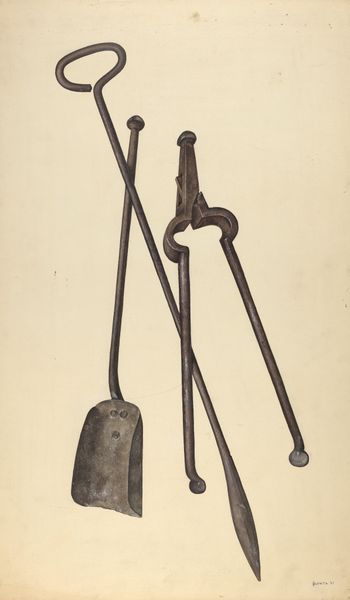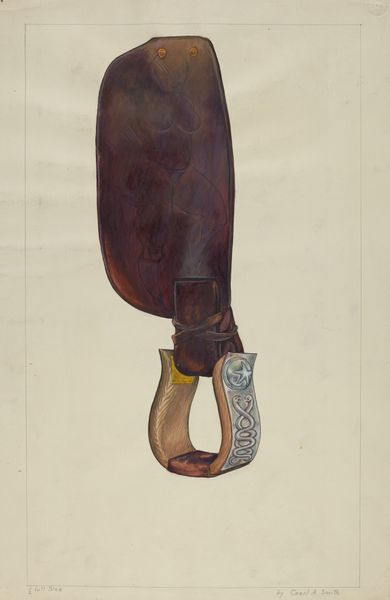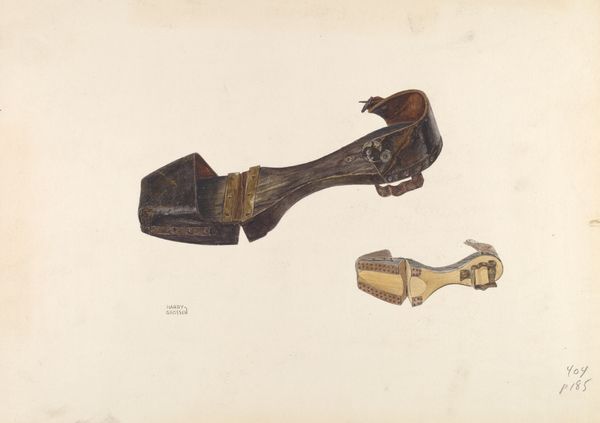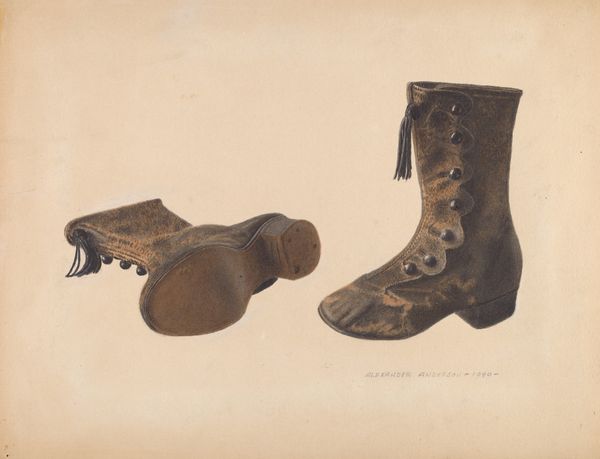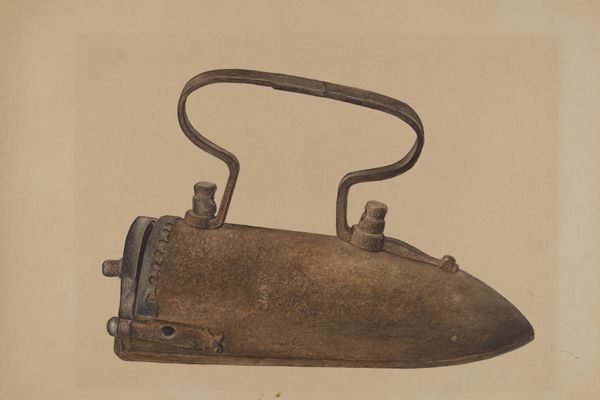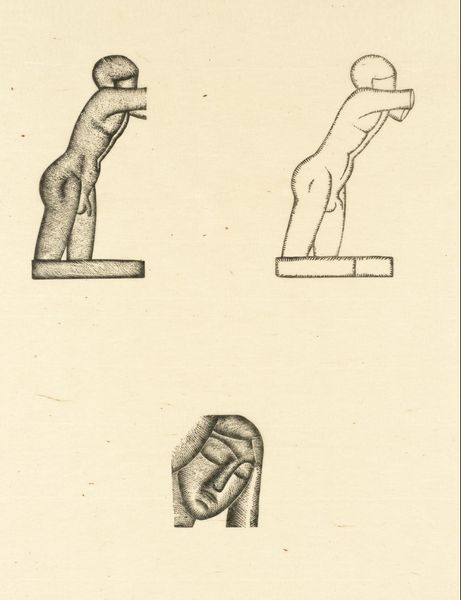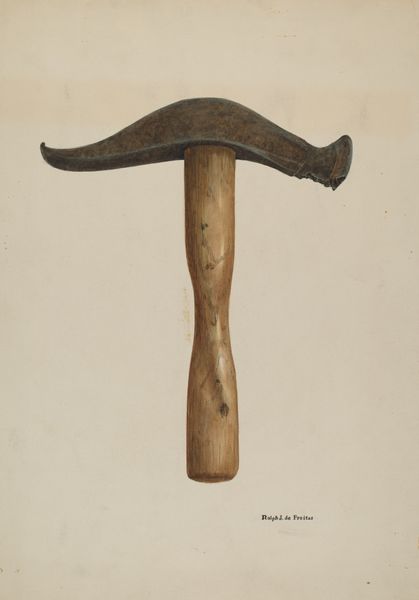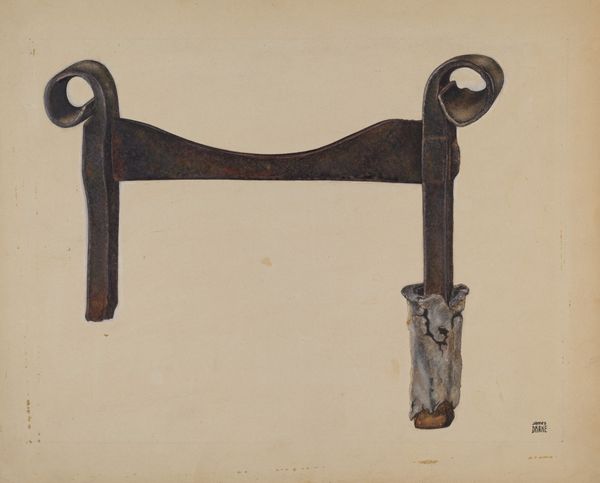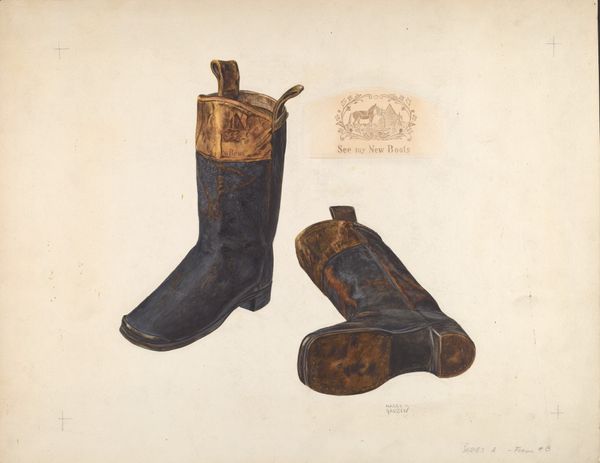
painting, oil-paint
#
painting
#
oil-paint
#
oil painting
#
realism
Copyright: Public domain
Editor: George Harvey's "Riding Boots," done in oil paint, presents these very utilitarian objects with such detail. They appear to be floating in a blank space almost. What grabs your attention most when you look at it? Curator: What strikes me is the almost defiant ordinariness. Consider the art world's obsession with heroism, the romanticized past often tied to equestrian culture. Boots, especially riding boots, were potent symbols of social class. Yet, by isolating them, presenting them without riders, the artist invites us to consider the social structure that the object serves, stripped from their usual narrative. Do you feel the almost brutal honesty? Editor: I hadn't considered the absent rider, or the social context. It seems more about realism, about perfectly rendering the leather and the buckles. Does the placement against a blank background emphasize a focus on Realism as a movement? Curator: Indeed. Placing them against this ground calls attention to realism as not simply representing objects, but in showing what gets excluded from painting and from museums. Think about it. Whose stories are told, and whose are literally left on the sidelines? These boots tell a silent story about work, utility, and perhaps even a kind of mundane, forgotten history. Does it shift your perspective at all? Editor: Absolutely. I was so caught up in the composition and the boots themselves, I didn't see how they might speak to a broader social commentary, to a certain visual culture! It is really impressive, especially from the vantage point of art history. Curator: And it also reminds us that objects can be both ordinary and profoundly symbolic, it only depends on how we engage with them and how we position them to give meaning and allow a reinterpretation of past social stratifications.
Comments
No comments
Be the first to comment and join the conversation on the ultimate creative platform.


